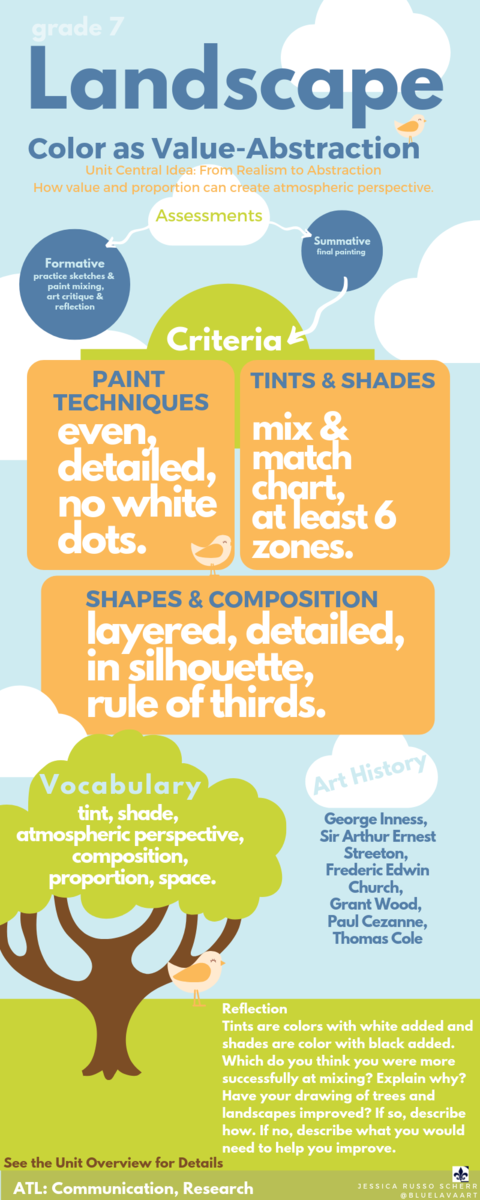Landscape Painting in 6 Values
Watch this video tutorial first.
Student Examples

Practice sketches of trees
Practice Sketches and Composition
Get approval from 2 of your peers for your thumbnail compositions
Composition Types
Need help organizing your composition?
The rule of thirds works really well for landscapes.
The rule of thirds is a compositional guideline that divides your compositions into 9 equal parts using two equally spaced horizontal lines and two equally spaced vertical lines. In landscape art, this rule Place key elements along these lines or at their intersections. Here’s how it works effectively:
- Horizon Placement: By positioning the horizon along the top or bottom third line, rather than the center, the artist can emphasize the sky or the land, adding depth and focus to the scene.
- Focal Points: Placing important elements such as trees, mountains, or buildings at the intersection points (where the lines cross) draws the viewer's eye naturally to these points, creating a more engaging and dynamic composition.
- Balance and Movement: This method avoids the static and unnatural feel of centering all elements, creating a more balanced and visually appealing image. It also guides the viewer’s eye through the artwork, enhancing the sense of movement and flow within the landscape.

Lightly sketch the 6 Zones on the painting paper
Start with your base color as zone 3